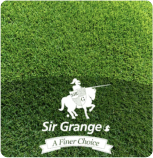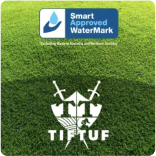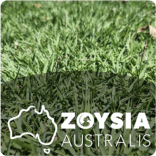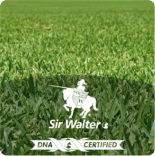As winter sets in and temperatures drop, many homeowners find themselves facing the challenge of maintaining a healthy lawn. With Winter comes the risk of frosts; frost can be particularly damaging to grass, causing discolouration, wilting, and even dead patches of lawn if left untreated. Join us as we will explore the signs of frost damage in lawns and share effective strategies and products to revive and protect your grass.
Identifying Signs of Frost Damage:
Frost damage on lawns can manifest in various ways. By knowing the signs, you can take prompt action to address the issue. Here are some common indicators of frost damage:
- Discoloured or Brown Patches: Frost-damaged grass often turns brown or yellow in patches, indicating cellular damage caused by freezing temperatures.
- Wilted or Stunted Growth: Frost-damaged grass may appear limp, wilted, or have stunted growth due to impaired nutrient uptake.
- Brittle Texture: Grass affected by frost becomes brittle and easily breaks when touched.
- White or Brown Haze: A thin layer of frost on the grass can create a white or brown haze, indicating the presence of ice crystals.
Reviving Your Frost-Damaged Lawn:
To restore your frost-affected lawn to its lush green state, the following techniques can help get your lawn back to thriving in no time!
- Leaf Harden Products: Strengthen your grass against frost damage by using products like Lawn Solutions Iron Guard Plus. This product enhances the plants resilience and hardiness, improving its ability to withstand freezing temperatures.
- Nutrient Boost with Colour: Give your lawn a nutrient boost and enhance its appearance with products like ColourGuard Plus. This innovative solution combines a pigment with essential nutrients (NPK), providing both food and colour to the grass, even during the colder months.
- Morning Dew/Ice Removal: Early in the morning, when frost or dew covers your lawn, gently water the grass to melt the ice or remove the moisture. This technique helps prevent prolonged exposure to freezing conditions and reduces the risk of damage.
- Mower Maintenance: Regularly maintain your lawn mower to ensure healthy cutting. Consider changing mower blades to prevent tearing or damaging the grass. A clean cut promotes faster recovery and minimises stress on the grass.
- Reduce Foot Traffic: Avoid excessive foot traffic, especially in areas that have been heavily damaged by frost. Overuse can further stress the grass and hinder its recovery.
- Clear Dead Debris: Remove dead leaves, branches, and any other debris from your Lawn. Dead organic matter traps moisture and can suffocate the grass, impeding its growth and recovery.













